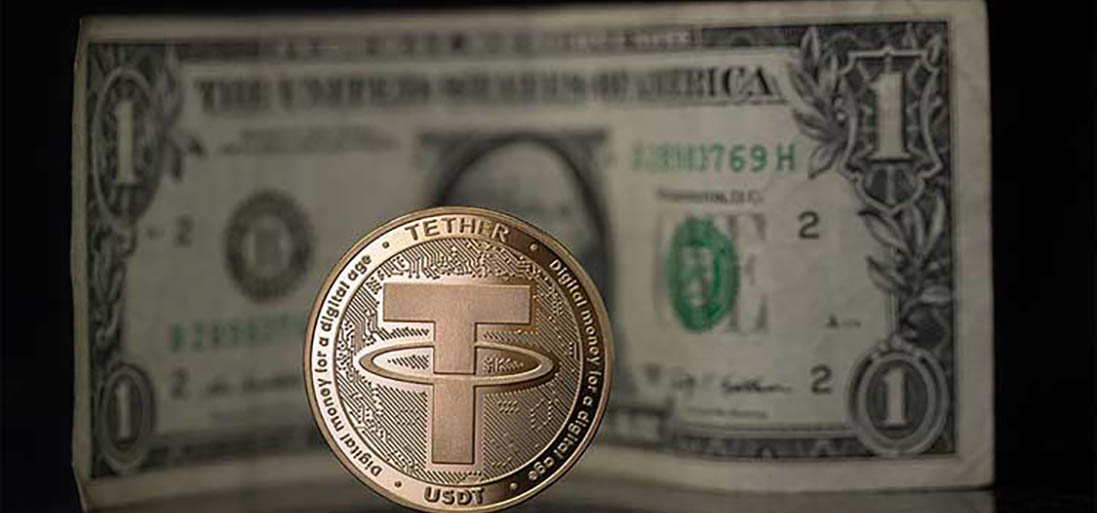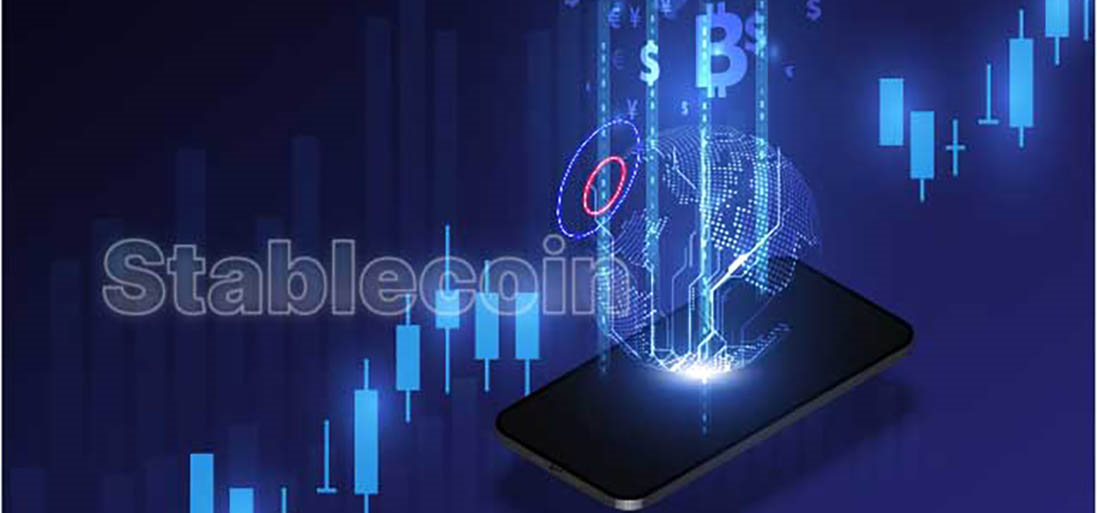The recent LUNA crash has caused the coin-backed stablecoin UST to lose its dollar peg. But this was not all. Unrest began in the market, and in the panic, investors began to get rid of stable coins massively. Even Tether could not oppose to the sell-offs and lost its peg to the dollar, dropping to the level of $0.95, fluctuating near this mark.
For crypto enthusiasts, this was a real shock, because USDT is the lion's share in investor portfolios. It is stablecoins that allow you to store funds in cryptocurrency, but at the same time protect yourself from exchange rate volatility. May all these events lead to a loss of confidence in stablecoins? How can investors protect their funds, and which asset should they choose as an alternative? With these questions, we turned to experts.
Has investor confidence in Tether been shaken?
Some investors had been expressing doubts about the dollar backing for all the assets of USDT. We asked experts if we should expect that the situation with the fall of the exchange rate below the parity with the dollar will lead to a decrease in the popularity of Tether.
Didar Bekbauov, Co-Founder of the Xive crypto mining company, thus comments on the current situation,
“Over the past week, the capitalization of USDT has fallen by 8 billion dollars, while the capitalization of two other stablecoins, USDC and BUSD, has increased by 4 and 2 billion, respectively. This speaks of investors' fears about the situation with Tether. In the future, I think, these fears will increase.”

Roman Shtykh, entrepreneur, CEO at MetaLamp, says,
“Generally speaking, the fall may happen again for such dramatic news. But for us to see a drastic fall and depreciation of Tether and the rest, an event must occur that undermines the confidence in stablecoins backed by real dollars. For example, it will be revealed that not all such stablecoins are backed by real currency. This can greatly affect the market. As long as the market believes that each USDT is backed by one US dollar, the currency will be stable.”
Artem Ibragimov, 3V Fund Cryptocurrency Portfolio Manager, says,
“Does USDT really have dollar collateral for all of its assets? This issue has been discussed for quite a long time. As far as I know, USDT managed to prove that every 1 USDT is backed by 1 USD.”
Vladimir Gorgadze, head of the Blockchain Master's Program at MIPT, head of tokenization projects at MMC Norilsk Nickel, head of blockchain solutions developer Newity, says:
“This kind of doubt about the USDT has been expressed for almost 10 years now. I do not think, however, that this particular situation will lead to a drop in the popularity of Tether.”
Victor Dorokhov, lecturer-practitioner of the program "Digital Economy" at RUDN University, believes that Binance's efforts to promote its stablecoin, BUSD, can most likely lead to a fall in the popularity of Tether. Binance is the exchange with the biggest market liquidity. And litigation and various reverberations in the community have been taking place since 2018. It is clear, however, there are always risks.
Oleg Fakeev, Founder of the Investment Whales Telegram channel, agrees that some investors have doubted the reliability of Tether's backing. This happens to any popular product. Right now we should take this as just rumors. Of course, such a scenario cannot be ruled out and one should always be prepared for it. But at the moment, the popularity of USDT is growing and, of course, will fall with each instance of decoupling from $1.

Dmitry Zamolotsky, an analyst in the banking and cryptocurrency sector, a successful financier, believes that there is nothing to worry about in the case of USDT. This is a company from another league. But risks do exist. If the USDT capitalization drops below $50 billion, one should react quickly because it is at this level that problems with the repayment of their obligations for Tether may begin.
Igor Zakharov, CEO of DBX Digital Ecosystem, emphasizes that Tether's temporary drop to $0.95 was presented in the news as a violation of the 1:1 peg to the US dollar. Yet this is not entirely accurate. The drop was mostly a side effect of the sharp drop in the price of another stablecoin, UST. Tether has bought USDT back down to $1. Overall, the USDT “unpeg” was not really caused by the lack of reserves, but by sentiment among traders.
Tether stated on their blog,
“The size of this redemption [7 billion dollars], managed flawlessly, shows that USDT is by far the most robust stablecoin in the industry. Tether engages in constant risk-management and stress-test scenarios, ensuring it always has at hand a liquid portfolio of assets to manage redemptions, even in a bank-run scenario.”
The expert adds that after the fall of UST, Tether has one less competitor, and it should gain popularity.
Egor Abramov, Principal of the Fort Ross Ventures venture fund, says,
“In the near future, I do not expect problems with USDT, because the token is still backed by real assets in the form of dollars and securities. Quite another thing, many believe that the level of security there is significantly less than 100%. But this system will be able to survive short-term shocks. Banks also reserve far from 100% of their obligations, and many of them live for a very long time without bankruptcy.”
Dmitry Noskov, an expert at the StormGain crypto exchange, says,
“Yes, there have been such doubts. The project itself stated that each issued Tether was backed by a dollar in a bank account. But in 2019, New York prosecutors concluded that the claim was false. In particular, it turned out that in 2018, Tether sent $625 million of its reserves to the Bitfinex exchange to pay its obligations to it.
“Now Tether has greatly disappointed investors, and their confidence in stablecoins as assets worth investing in has been greatly shaken. So Tether will now be under powerful pressure, anyway. Its price is unlikely to rise above $1.”
Yaroslav Yarutin, attorney, lawyer in international law, orientalist-sinologist, crypto-enthusiast, emphasizes that lawyers and law enforcement agencies of Western countries have been asking questions related to the proper security of stablecoins for a long time. Information about suspicions by law enforcement officers in New York was published back in 2020 in The Wall Street Journal.
The expert adds that provisions have been developed in international law to the effect that international financial institutions may use stablecoins while deeply analyzing the reliability and quality of the stabilization mechanism in establishing the risk level for relevant operations. In this light, the news about the drop of the famous stablecoin is a negative event for crypto enthusiasts, as it will hinder the legal use of crypto assets by financiers and bankers around the world.
Anton Efimenko, consultant on tokenomics and tokensales, notes that the price of USDT periodically goes below the dollar, but there is a psychological barrier at $0.8 per coin. Having reached this price, a sharp sell-out of the asset may occur, by automated trading algorithms, inclusively. Then Tether will definitely lose the trust of traders.
Alexander Nikulin, Sales Director of EMCD, the largest mining pool in Eastern Europe, is sure that nothing threatens the centralized stablecoins USDT, USDC and others in this situation. They adequately withstood the moment of panic sales. This is not the first time that USDT has fallen, but Tether is showing that they have collateral for the coins. The main risk for centralized stablecoins is regulation, and many regulators have already taken notice of the situation with UST and are preparing a response to the incident.
Is there an alternative to stablecoins?
Stablecoins have been a reliable protection for crypto investors from volatility. Is there a worthy replacement for them in the crypto market? We asked experts if the confidence of crypto enthusiasts in this asset class would be shaken.
Igor Zakharov is sure that it would be too early to start looking for a replacement for stablecoins after the recent events. Meanwhile, all stablecoins may experience distrust from investors. There are at least two types of stablecoins: algorithmic stablecoins and collateralized stablecoins. The former does face a justified loss of investor confidence. For example, the UST coin failed to maintain its 1-1 peg to the US dollar. Backed stablecoins, however, like USDT and USDC, have bounced back and proven to be robust and reliable. That the confidence of crypto enthusiasts has not been shaken much is proved by the current good performance of stablecoins backed by traditional assets denominated in dollars.
Roman Shtykh believes that it is hardly possible to find a more "stable" analogue of stablecoins in the crypto world. But to say that trust in all stablecoins has been undermined is unreasonable. "Algorithmic" stables are facing a crisis, but they did not occupy a significant market share and were a very controversial asset. In all other respects, most likely, the market will recover and continue to grow.

Egor Abramov emphasizes that stablecoins are an integral part of DeFi. Many operations will be impossible without them, so we can’t talk about their disappearance. Market leaders, however, may well change. For example, if the same notorious USDT dies, then USDC or some other token will replace it. As they say, a holy place is never empty.
Ivan Petrov says,
“As for the confidence in the crypto market, it is restored quickly in investors in proportion to the number of times the capital is multiplied when the market goes up. Most likely, stablecoin providers have already drawn the right conclusions and increased the security of their own products many times over.”
Alexander Belenov, head of the Blockchain Laboratory of the Idea Research Center, says,
“I don't think there will be a loss of confidence in asset-backed stablecoins. And among the algorithmic stablecoins, I think investors will increasingly turn to already proven, transparent and reliable solutions.”
Dmitry Zamolotsky answers,
“Bitcoin can become a replacement for stables, as well as the basis of the global financial system. It will take at least ten years for Bitcoin to find a fair price and stop being volatile.”
Didar Bekbauov says,
“Confidence in individual stablecoins will be shaken, but not in the whole class, since there is no alternative yet. Investors need a peg to the dollar.”
Aaron Chomsky, Head of the Investment Department of ICB Fund, notes that stablecoins are still reliable tools for investors that allow them to work with digital assets in the most efficient way. It is clear that some new experimental instruments are not as reliable as others, but this is completely normal. If the peg to the exchange rate of the American currency works due to collateral in dollars and dollar-denominated securities, then the stablecoin does not have any fundamental problems. Yes, the rate can change by some fractions, but this difference is extremely quickly leveled out by speculators involved in arbitration. If issuers decide to rely on the robustness of their cryptocurrency and use it to maintain the stablecoin rate, then you should not particularly trust this instrument for obvious reasons. So, the LUNA crash had a negative effect on UST, and vice versa.
The expert notes that it is also necessary to take into account the mechanisms underlying the sale of UST by investors. The first is burning UST and minting LUNA. Terra is a blockchain with all the ensuing problems with transaction delays and time limits for issuing and burning coins, which only increased the pressure on the exchange rate as the number of LUNA coins in circulation increased. The lower the value of LUNA, the more liquidity is needed to secure the exit from the UST. The second option involves pouring UST into the liquidity pool, which already implies an increase in the amount of UST in the pool, and the withdrawal of the second currency, for example, USDC. In other words, this option also reduces the cost of USDC. Knowing all this, only one question remains. Why on Earth did Terra even decide to use such a fragile mechanism, and why so many investors did not even think about the possible consequences? The events will only negatively affect the popularity of new experimental stablecoins, while more traditional instruments will be in demand.
Viktor Dorokhov comments,
“This asset class is unlikely to leave the market, since the earnings of a lion's share of market participants are tied to it. Quite another thing is which of the players will pull the largest share of liquidity into their stablecoin.”
Oleg Fakeev says,
“Stablecoins are still a very important hedge against volatility, but investors will now be wary of investing in new stablecoins. By which criteria to assess risk remains the choice of each investor, but we believe that in the long run, this situation will help the crypto market avoid the stupid mistakes that Terraform Labs made.”
Anton Efimenko, consultant on tokenomics and tokensales, is sure that this situation will not go unnoticed for stablecoins. He says,
“National cryptocurrencies will dramatically change the attitude towards stables, since there is no longer any reason to keep derivatives in their portfolio, and traders will simply switch to digitized currencies. Until this moment, stables are going to remain the only ‘safe haven’ of the crypto world.”
Vladimir Gorgadze emphasizes that some stablecoins are issued by companies with many licenses from regulators, and such companies value their reputation (USDC, PAX USD, GUSD, etc.). A drop in the confidence of crypto enthusiasts in these assets is hardly to be expected.
The expert adds that digital currencies of Central Banks (CBDC) entering the markets are competitors to stablecoins if not a complete replacement. Almost all the Central Banks of the world's leading economies, except the United States, are working on issuing their digital currencies, launching pilot projects and testing. Not all crypto enthusiasts like such a replacement due to the complete control over the currencies, which are subject not only to economic, but also to political influence of regulators.







